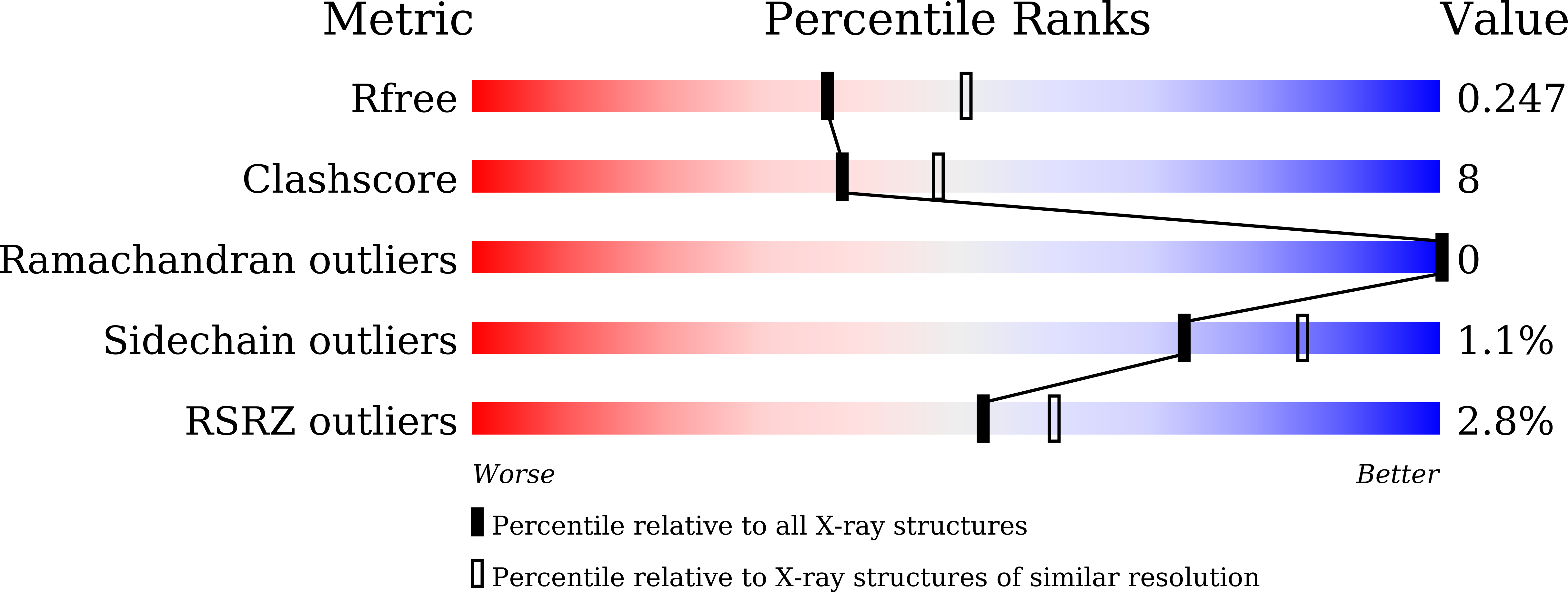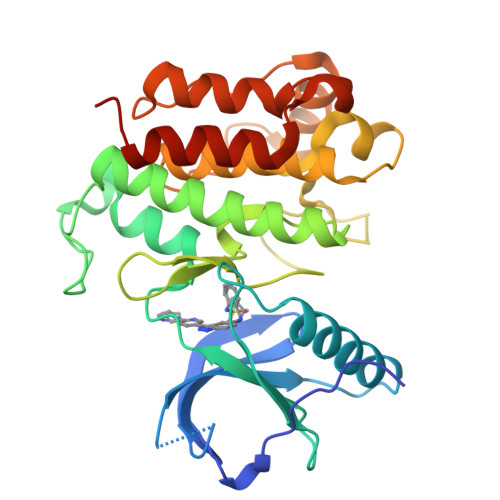The discovery of novel 3-aryl-indazole derivatives as peripherally restricted pan-Trk inhibitors for the treatment of pain.
Shirahashi, H., Toriihara, E., Suenaga, Y., Yoshida, H., Akaogi, K., Endou, Y., Wakabayashi, M., Takashima, M.(2019) Bioorg Med Chem Lett 29: 2320-2326
- PubMed: 31235262
- DOI: https://doi.org/10.1016/j.bmcl.2019.06.018
- Primary Citation of Related Structures:
6J5L - PubMed Abstract:
The design, synthesis, and biological evaluation of novel 3-aryl-indazole derivatives as peripherally selective pan-Trk inhibitors are described. Three strategies were used to obtain a potent compound exhibiting low central nervous system (CNS) penetration and high plasma exposure: 1) a structure-based drug design (SBDD) approach was used to improve potency; 2) a substrate for an efflux transporter for lowering brain penetration was explored; and 3) the most basic pKa (pKa-MB) value was used as an indicator to identify compounds with good membrane permeability. This enabled the identification of the peripherally targeted 17c with the potency, kinase-selectivity, and plasma exposure required to demonstrate in vivo efficacy in a Complete Freund's adjuvant (CFA)-induced thermal hypersensitivity model.
Organizational Affiliation:
Pharmaceuticals Research Center, Asahi Kasei Pharma Corporation, 632-1 Mifuku, Izunokuni, Shizuoka 410-2321, Japan. Electronic address: shirahashi.hd@om.asahi-kasei.co.jp.



















